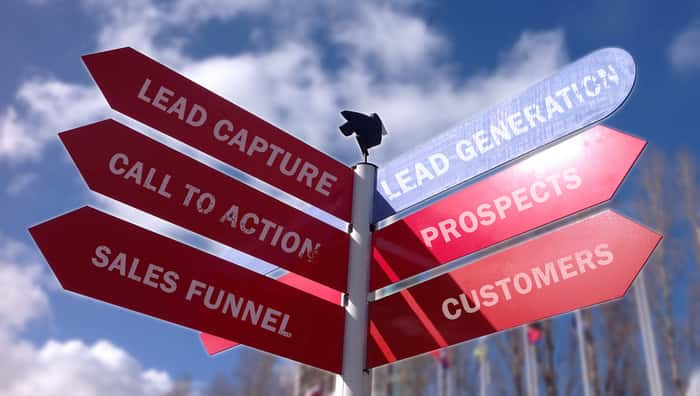
SEO lead generation techniques are critical for any lead generation campaign, but, it’s not enough just to ensure your site is SEO friendly. If you want to get found, it’s crucial to add high-performance SEO.
SEO Lead Generation
SEO is considered one of the most important parts of an internet marketing and an effective digital lead generation strategy. With search engines, such as Google and Bing, dealing with billions of search queries every single day, the role of SEO in organic search results can’t be denied.
Today, it’s not enough to ensure your website has the basic minimum SEO elements in place. If you want to get found, it’s crucial to ensure that your website is more than just SEO-friendly.
Along with the basics, if you want to win the race with your competition and get easily found on the web, you need to tune your website with high-performance lead generating SEO.
Lead Generation Tactics That Get the Best Results?
As a small business owner, return on investment is key. Investing in the most effective lead generation methods available will help scale your company, keeping costs level while building revenues.
We recommend approaching a lead generation project by first looking at the statistics. With the above question in mind, we conducted a little research.
In 2017, searches on Google accounted for over 79% of all search traffic, followed by Bing at 7.27%, Baidu at 6.55% and Yahoo at 5.06%. (Source: NetMarketShare)
To win at lead generation, it’s obvious, you have to play by Google’s rules. Companies who rank on Google are most likely getting the most business. So what lead generation tactics get the best results:
One survey conducted by Hubspot concluded that:
- The best three lead sources for B2B companies are SEO (14%), email marketing, (13%), and social media (12%).
- The best three lead sources for B2C companies are social media (17%), SEO (16%), and email marketing (15%).
- The worst three lead sources for B2B companies are traditional advertising (3%), PPC (6%), and direct mail (6%).
- The worst three lead sources for B2C companies are telemarketing (3%), trade shows (6%), and PPC (6%).
Take a look at the chart below:
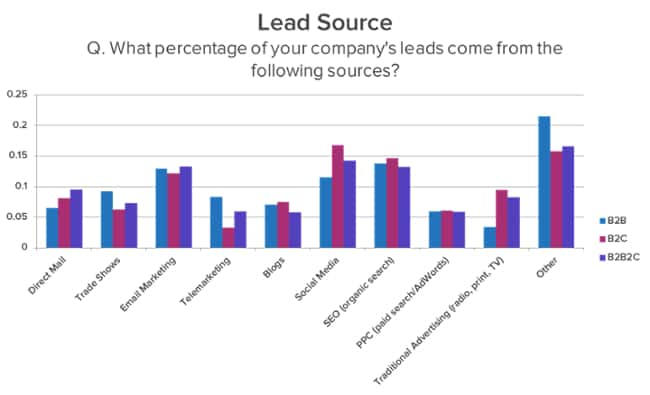
With the same question in mind, Ascend2 conducted research on the most effective tactics for online lead generation.
What they found out is a little different:
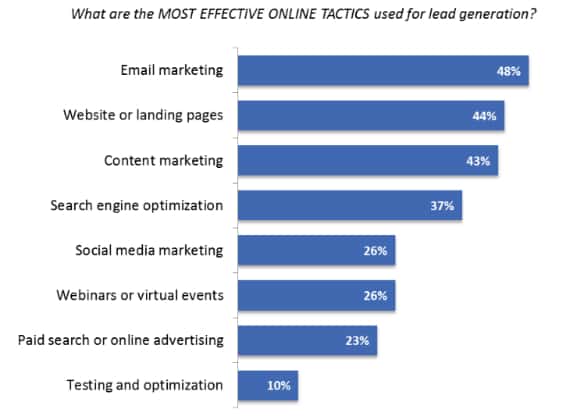
Surprised? The 2-decade old tactic of Email marketing is still the most effective form of lead generation. Websites, content, and, SEO make up the remaining 3 in the top 4 methods used for lead generation.
When deciding what key services we would offer to generate leads for our customers, we looked at the research. Our four key offerings include SEO, Web Design, Content Writing, and Social Media. Email marketing, for us, is generating and distributing effective content and is tucked neatly into that offering. NeXes Digital
So let’s take a look at the effectiveness of the top four lead generation tactics.
In the Holger Schulze report, 83% of marketers rated their company website as an effective lead generation tactic, with SEO coming in at number three at 77% for generating leads.
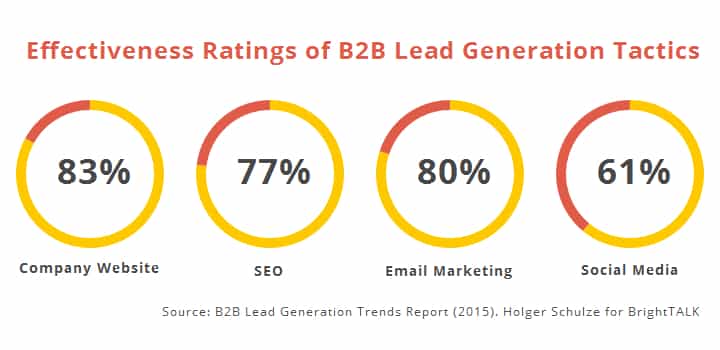 We would argue with those finding on one critical point, your website and its content are of no use if they can’t be found. And that’s where search engine optimization (SEO) comes in.
We would argue with those finding on one critical point, your website and its content are of no use if they can’t be found. And that’s where search engine optimization (SEO) comes in.
Look a what HubSpot had to say about the relationship between your website and SEO:

How SEO Generates Leads
In most cases, lead generation is an integrated practice that includes website design, content strategy, and SEO. This can include PPC and social media marketing, but it doesn’t have too. They work together to create leads. SEO gets you found on the web. It generates more traffic to your website and more leads and sales.
SEO Utilizes Three Elements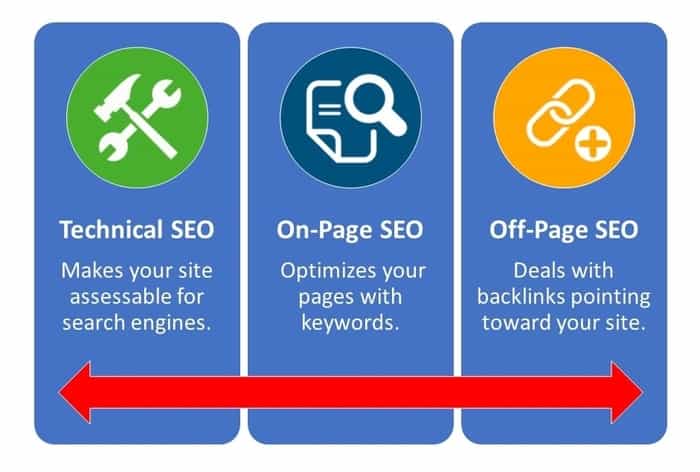
Many small businesses and professional service firms make the mistake of not utilizing all three SEO elements. SEO needs to be a part of your overall inbound marketing and needs to play a bigger role if it’s already not doing so.
When your prospects type in keywords on different search engines, depending on your level of SEO, they may find your content in the results and follow those links to your website. This creates organic traffic. SEO, using the three elements listed above, acts as a lure to bring a stream of leads to your site, cementing your website as a tool for lead generation.
The lure needs a rod, reel, line, hook and maybe a bobber or a weight. In the same way, your SEO needs all the basic technical elements in place if you want an opportunity to attract an online audience.
Then, to ensure you’re maximizing your SEO strategy, you’ll need to add high-performance on-page and off-page SEO elements. Just as each lure is designed for a different species of fish. High-performance SEO is designed around the individual needs and pains of your audience.
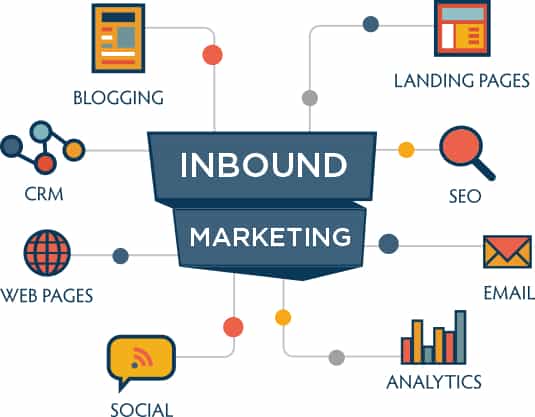
SEO is a key part inbound marketing tactics in a way that, since it’s part of inbound marketing, it helps leads to find you. The advantage of this, rather than the other way around, is the fact that visitors who initiated interaction themselves are more likely to be receptive than those you approach. Inbound marketing creates warm leads. When your content is optimized, it’s more likely to generate more and more traffic as time passes.
Cost Effective SEO Lead Generation
It’s safe to say, even if you’re confused which lead generation strategy to go for, SEO should be a part of almost every online digital lead generation campaign. It is one of the most cost-effective lead generation tactics.
Every client likes to save money while getting great results from search engine optimization. But by always looking to save money on SEO, you’ll take your eye off the more important issue of intelligently allocating your marketing budget across various tactics, of which, SEO is often the most cost effective. Source: searchengineland.com
Unless you have a strategic focus elsewhere, it is the low-hanging fruit of digital lead generation for inbound marketing.
Let’s take look at few ways you can cover the basics.
Minimum Search Engine Optimization (SEO) Elements
Many times, the technical aspects of SEO are taken for granted. Technical SEO forms the base of all your SEO efforts. To ensure your lead generation site is SEO-friendly, yet still not high-performance, you’ll need to ensure a few things.
• Meta description tags on every page: Meta descriptions should be compelling and relevant and should avoid duplicate tags and double quotations marks.
• Header content on every page: Your header should avoid keyword stuffing and flow naturally.
• Avoid useless URL’s that include dates and general descriptive terms. Use that space effectively by describing the link.
• Optimized Images: Use Alt tags: The alt tag is the name of the image and should ideally have a keyword that describes the image and contains keywords. Apart from that, it’s better to use dashes instead of underscores and to not use file names or non-alpha characters
• A robots.txt file: This file is crucial for a number of reasons, including keeping sections of your site private and ensuring search engines don’t index particular files on your site (images, PDF’s, etc.) that you don’t want to be indexed.
• An XML sitemap: Specially written for search-engine spiders, an XML sitemap ensures the aforementioned spiders are able to extract relevant information about your site through the XML file. Keep your sitemap updated and make sure to register it on the Google Search Console. Sitemaps enhance navigation capabilities and make your site more user-friendly. A sitemap is easy to create and can be made through an online sitemaps generator if you don’t already have one.
• 301 redirects from old Web pages to new ones: Ideal for users and search engines, both, 301 redirects indicate the page location has changed and the updated version can be found through a new URL.
• A content management system (to add and edit pages and content): The ideal CMS allows you to edit your site easily and enable a mobile version of it. WordPress is a good CMS you should consider.
• Links: Fix all internal and external broken links on a regular basis. Use both contextual internal links( link to SEO page) and outbound links. (https://moz.com/blog/should-seos-care-about-internal-links-whiteboard-friday). If you’re using WordPress, we recommend installing a broken link checker plugin.
High-Performance SEO Best Practices
A. Keyword Research and Keyword Strategy: In 2017, 50% of search queries are four words or longer. Understand the language of your target audience by researching the terms they are themselves researching. Through keyword research, you need to find the phrases you can include in your content and get different ideas for new content.
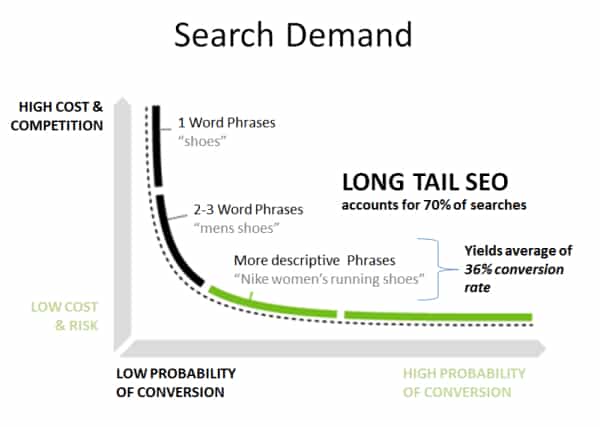
The best keyword phrase is a long-tail keyword. It is relevant and should have a high search volume, low competition and be the “money” phrases that warm leads are using. Use keywords and keyword synonyms in your page copy and delete any duplicate content you find on your site.
B. Custom Title Tags: Your title tag should be unique and, ideally, be 55 characters or less (including spaces). The format should be Primary Keyword – Secondary Keyword | Brand Name.
C. Custom Meta Description Tags: Your meta description tags are crucial in ensuring viewers move from the SERP to your site. Ideally, this should be 150 or 160 characters’ max, unique, compelling, and shouldn’t use non-alpha characters or quotes. Think of it as a small advertisement for your content.
D. Header Tags: H1, H2, and H3 tags are most commonly used whereas H4, H5, and H6 are rarely used. Your post should ideally have one H1 tag and can have multiple H2 and H3 tags. However, for H2 and H3 tags, your keywords should be used in these tags, but not in all the headings and need to flow in seamlessly.
E. Body Content: – Body content on every page: Your content should stand out and cover topical information in depth. Quality writing. 750 words minimum is recommended 1500 – 2000 words is better. A recent study by Backlinko concluded that the longer the content, the higher the likelihood of it ranking at the top of the SERPs.
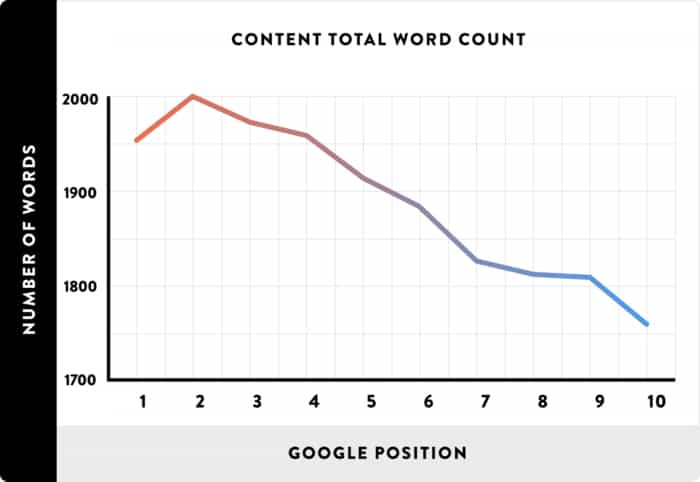
This content needs to be high-quality content specifically designed for the audience you want to attract, using the keyword phrases that will attract them. Think quality over quantity. Your content needs to be unique and compelling.
Additionally, you should incorporate your keyword phrases several times and include links from other pages in your site back to the page, i.e. internal linking. See the topic below for more on this strategy.
F. Topic Clusters: Clustering your content around pages that you want to rank for is a blend of SEO and website structure. Read more about how we use topic clusters on our web design 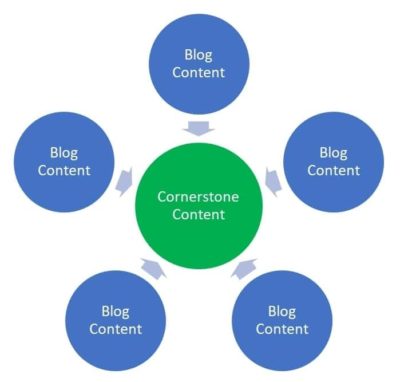 page. Notice that we are not linking to that page directly. We could, but our link strategy with this post is to build “link equity” for our SEO page, not our web design page.
page. Notice that we are not linking to that page directly. We could, but our link strategy with this post is to build “link equity” for our SEO page, not our web design page.
G. Site Speed: In 2010, Google announced that site speed would be a ranking factor. They have consistently emphasized the importance of site speed ever since. Page speed is one of Google’s top priorities, an important factor that affects your rankings and is better for user experience. For instance, one survey found that nearly 79% of web shoppers( https://blog.kissmetrics.com/loading-time/) who have trouble with website performance won’t return to the site to buy again. Consider compressing all images to reduce their size and increase their load speed. Use Browser Caching to further increase load speed.
H. Backlinks: An important off-page SEO strategy. Search engines look at the number of backlinks to your site to determine if your content is worthy of ranking.
I. Social Media: You should maintain a social media presence even if it’s not the main source of leads for your company. There is a high correlation between social signals and rankings.
J. URL Structure: A clean URL structure and custom URLs: A simple and accurate URL structure helps improve your site’s ranking since it’s easier for users and search engines to understand. Your URL’s should include your main keywords, but make sure you keep them short and user-friendly.
Basic technical SEO elements are best viewed as a skeleton that forms the base your site is content is built upon. However, to ensure you’re getting the most out of it, it needs to be followed by other lead generation maximizing SRO strategies to ensure it meets its potential.
Stay tuned for the next articles in this series that will lead you through the steps for lead generation that include website design structure, social media, and content strategy750
